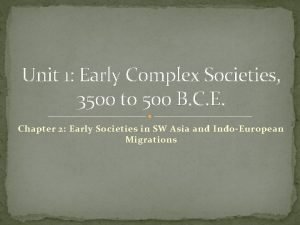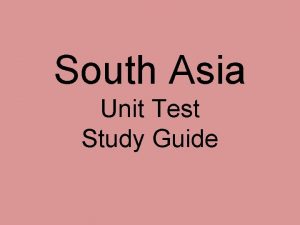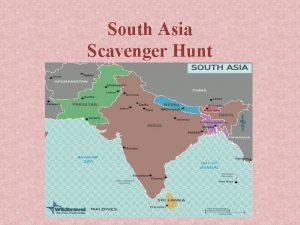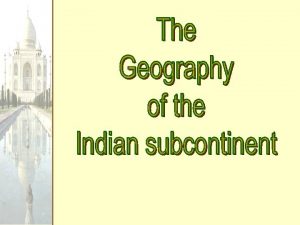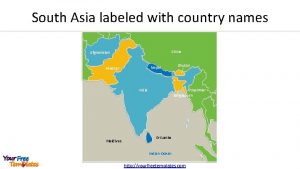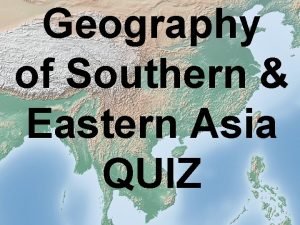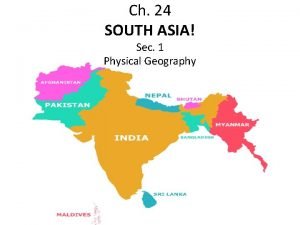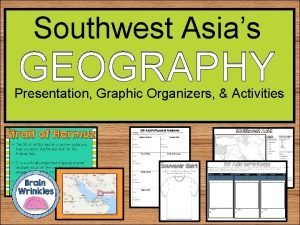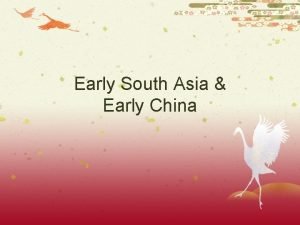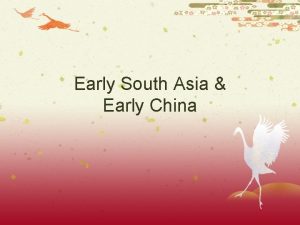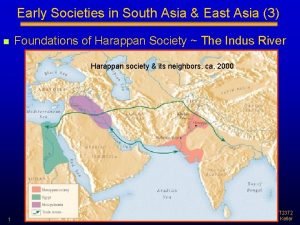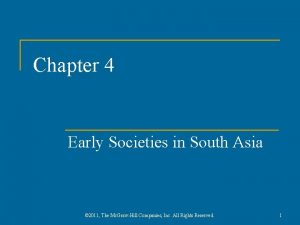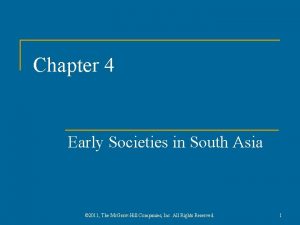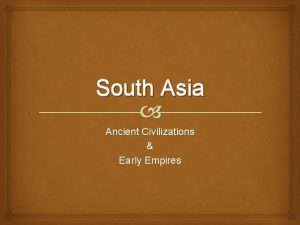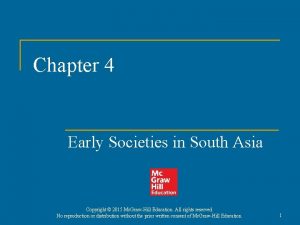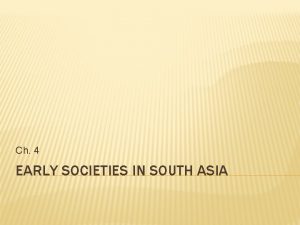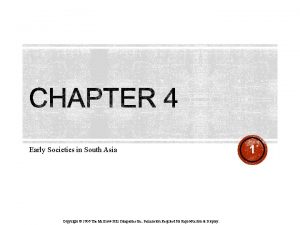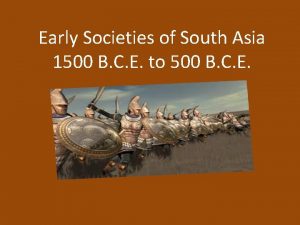Chapter 3 Early Societies in South Asia 2011














- Slides: 14

Chapter 3 Early Societies in South Asia © 2011, The Mc. Graw-Hill Companies, Inc. All Rights Reserved. 1

Life in the Indus Valley In your groups: Take turns reading the story, “Life in the Indus Valley” Create a Brochure: • Design a Travel Brochure that will be distributed along the trade route between the Indus Valley and Mesopotamia • Create a colorful and eye-catching cover for your brochure. • Present the information on accommodation on the inside cover. • Assemble your information on transportation and route on the back of the brochure. • Remember that you want to attract visitors so you will want to present hardship and danger on the journey as excitement and adventure. • Use the inside of the brochure to present the information on “what to do, ” “what to see, ” and “what to buy. ” • Make it as attractive, appealing and informative as you can. Balance the text with illustrations and use plenty of color 2

Homework Read and Take Cornell Notes: Set up your paper Cornell Notes style. Read Chapter 4 Beginning on page 89. Write the following questions on the left hand side. Answer the questions, notes style, on the right hand side. 1. Where was the Indus river and why was it ideal for civilizations to develop? 2. What were the first major civilizations to develop around the Indus River Valley? 3. What were the demographics of Mohenjo-daro and Harappa? 4. What was Harappan society and culture like? 5. How did the Harappans come to an end? 6. Who were the Aryans? What was their economy/religion like? 7. What was the Vedic Age 8. What is the Caste System? 3

Harappan Society and Its Neighbors, ca. 2000 B. C. E. © 2011, The Mc. Graw-Hill Companies, Inc. All Rights Reserved. 4

Foundations of Harappan Society n The Indus River q n Major society built by Dravidian peoples, 30002500 B. C. E. q q n Silt-enriched water from mountain ranges Cultivation of cotton before 5000 B. C. E. , early cultivation of poultry Decline after 1900 B. C. E. Major cities: Harappa (Punjab region) and Mohenjo-daro (mouth of Indus River) q 70 smaller sites excavated (total 1500) 5

Mohenjo-Daro Ruins n n Population about 40, 000 Regional center q q n n n Layout, architecture suggests public purpose Broad streets, citadel, pool, sewage Standardized weights evident throughout region Specialized labor Trade 6

Harappan Society and Culture n Evidence of social stratification q n n n Dwelling size, decoration Harappan civilization: influence on later Indian culture Statues, figurines, and illustrations reflect a tradition of art and metallurgy Venerated goddesses of fertility 7

Mysterious End of Harappan Civilization n Reasons for disappearance unclear q q q Excessive deforestation, loss of topsoil Earthquakes? Flooding? n n n Evidence of unburied dead Disappearance by 1500 B. C. E. Harappan traditions survived – agricultural practices, religious beliefs, and urban traditions 8

The Early Aryans n Pastoral economy: sheep, goats, horses, cattle q n Cattle not sacred until many centuries later Religious and literary works: the Vedas q q q Sanskrit: sacred tongue Prakrit: everyday language, evolved into Hindi, Urdu, Bengali Four Vedas (wisdom), most important Rig Veda n 1028 hymns to Aryan gods 9

The Vedic Age n Conflicts between Aryans and indigenous dasas (“enemies, ” “subjects”) q q n n Chiefdoms: rajas Early concentration in Punjab, migrations further south q q n Aryans fighting Dravidians Also Aryans fighting each other Development of iron metallurgy Increasing reliance on agriculture Tribal connections evolve into political structures 10

Varna: The Caste System n Origins in Aryan domination of Dravidians q Brahmin, priest Kshatriya, warrior Vaishya, merchant Shudra, serf q “Untouchables” q q q n Jati system of subcastes q Related to urbanization, increasing social and economic complexity 11

Patriarchy in Ancient Indian Society n n n “Rule of the father” A social order that stood alongside the caste system, and varna hierarchy Enforced in the Lawbook of Manu q q Women to be subject to fathers, husbands, sons Women’s most important duties to bear children and maintain wholesome homes 12

Aryan Religion n n Major deity of Rig Veda: Indra, war god Elaborate ritual sacrifices to gods q n Role of brahmins important Ca. 800 B. C. E. some movement away from sacrificial cults q Mystical thought, influenced by Dravidians 13

Teachings of the Upanishads n n n n Texts that represent blending of Aryan and Dravidian traditions Composed 800 -400 B. C. E. , some later collections until thirteenth century C. E. Brahman: the universal soul Samsara: reincarnation Karma: accounting for incarnations Moksha: mystical ecstasy Relationship to system of Varna 14
 Monotheism
Monotheism Chapter 25 human geography of south asia
Chapter 25 human geography of south asia Cahokia apush definition
Cahokia apush definition Swana region
Swana region South asia unit test
South asia unit test Asia scavenger hunt
Asia scavenger hunt South asia satellite
South asia satellite South asia physical features map
South asia physical features map South asia map and capitals
South asia map and capitals South asia physical features
South asia physical features Vocabulary activity 24 cultural geography of south asia
Vocabulary activity 24 cultural geography of south asia South asia map ganges delta
South asia map ganges delta South asia physical map
South asia physical map North america south america europe asia
North america south america europe asia Brain wrinkles southwest asia
Brain wrinkles southwest asia
